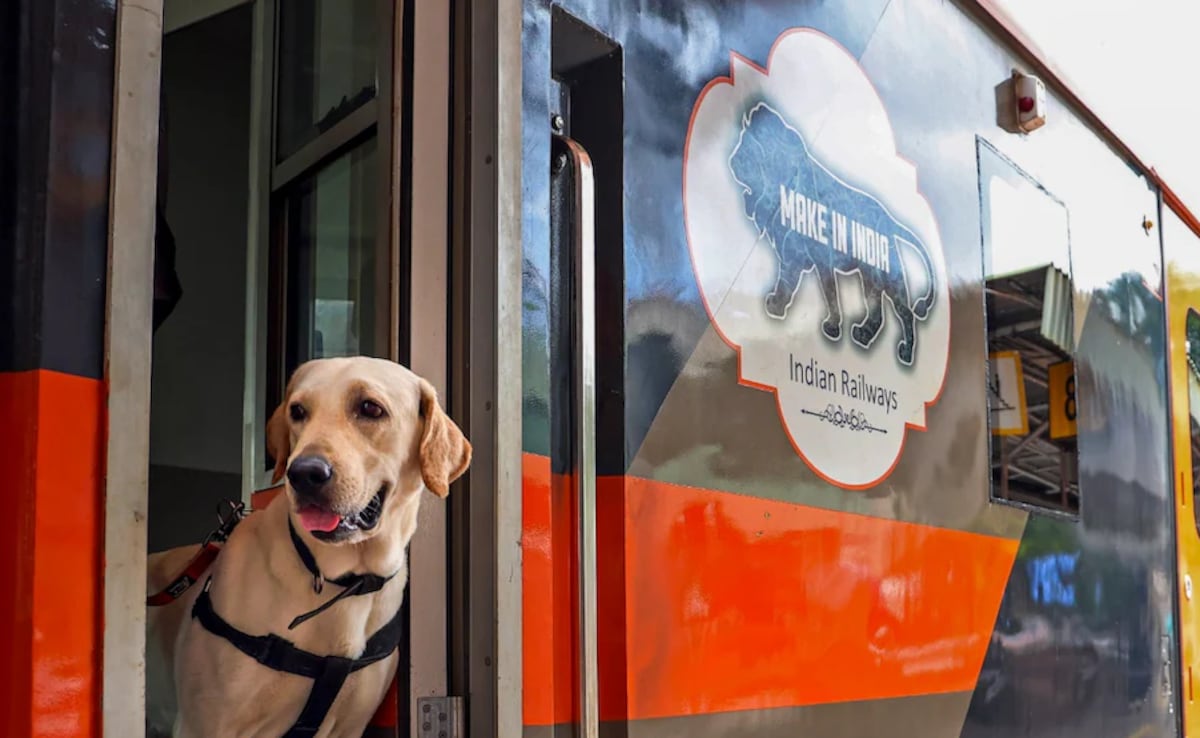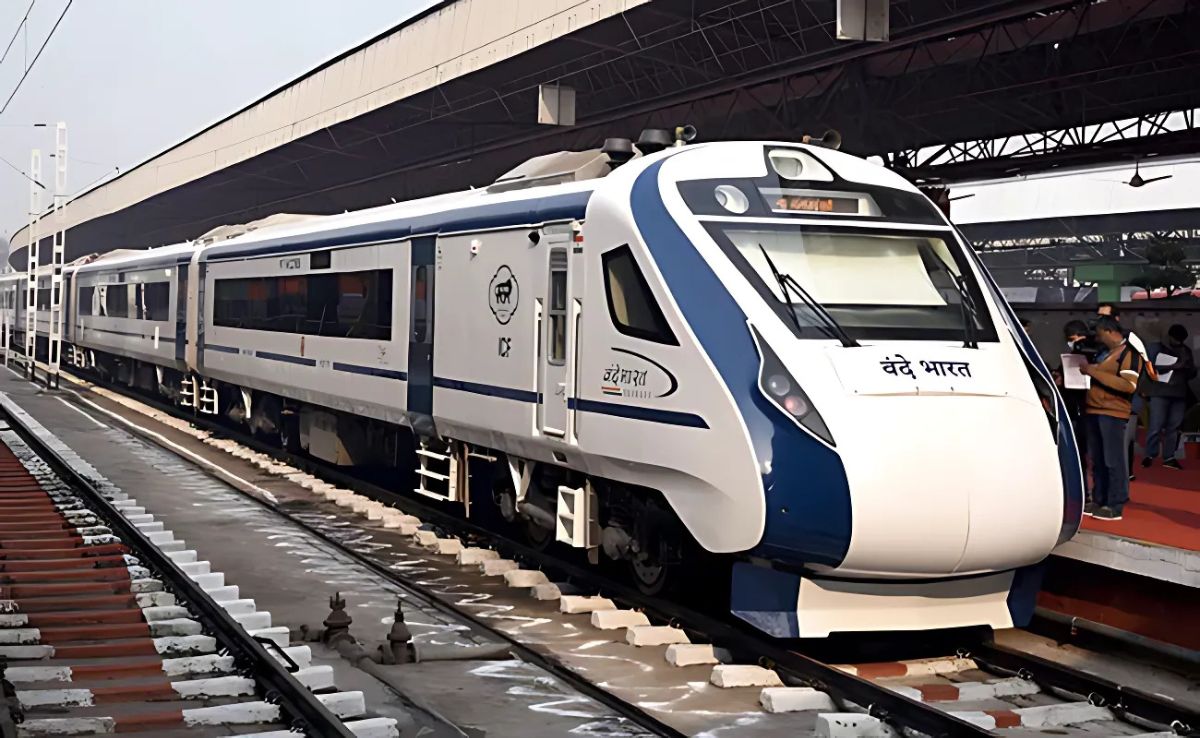
If you have ever booked a ticket on the Vande Bharat Express, or even considered it, you have probably paused at the choice between CC (Chair Car) and EC (Executive Chair Car). It is not just a matter of cost. It is about how you want to experience one of India's most advanced trains. Are you looking for a functional seat for a short commute, or do you want to stretch out in a plush chair with extra legroom and rotatable views on a longer journey? The decision can shape your entire travel experience. And with more routes being added across the country, from coastal stretches to mountain corridors, choosing the right class is more relevant than ever. Whether you are a first-time traveller or a regular passenger, knowing the difference between CC and EC can help you book the right seat and travel smarter.
Also Read: Now You Can Book Vande Bharat Tickets Just 15 Minutes Before Departure
CC vs EC in Vande Bharat: 5 Key Differences
1. Seating Comfort:
- Chair Car (CC): Features a 3x2 seating layout, space-efficient and ergonomic, but slightly compact. Best for short to medium journeys where practicality matters more than luxury.
- Executive Chair Car (EC): Offers a 2x2 layout with wider seats, extra legroom, and a better recline. Ideal for longer trips or business travel, with a more premium feel.
2. Ticket Pricing:
- CC: Affordable and suitable for budget-conscious travellers.
- EC: Costs 50-60 percent more than CC. The higher fare covers additional comfort and premium services, appealing to business travellers and those wanting extra space.
3. Amenities And Onboard Experience:
- Common to both: Air-conditioning, charging ports, infotainment screens, and clean interiors.
- Exclusive to EC: Rotatable seats, enhanced meal options, quieter cabins, and in some cases, lounge access at select stations for a near business-class experience.
4. Layout And Privacy:
CC: Higher seat density creates a livelier atmosphere, ideal for families and groups.
- EC: Fewer seats per coach mean more personal space, quieter surroundings, and a more private journey.
5. Booking And Availability:
Tickets for both classes are available via the IRCTC website, mobile app, and railway booking counters.
- CC: More seats per coach increase availability, but popular routes can sell out quickly.
- EC: Limited seats get booked early, especially on scenic or business-heavy routes.
Also Read: 7 Tips To Remember For Hassle-Free Train Journey
What Makes Vande Bharat Express Stand Out?
The Vande Bharat Express is not just another train on the Indian Railways network - it has redefined speed, design, and passenger experience.
- Indigenous Innovation: India's first semi-high-speed train, developed under the "Make in India" initiative by the Integral Coach Factory, Chennai.
- Launch Year: Introduced in 2019.
- Design And Speed:
- Sleek, engine-less design
- Accelerates from 0 to 100 km/h in just 52 seconds
- Maximum speed: 180 km/h (operationally capped at 160 km/h)
- Passenger Comfort:
- Automatic doors
- Onboard Wi-Fi and GPS-based passenger information systems
- Touch-free bio-vacuum toilets
- Executive class coaches with rotating seats and extra legroom
- Safety Features:
- Vande Bharat 2.0 includes KAVACH (Train Collision Avoidance System)
- Fire detection and suppression systems
- Regenerative braking saves up to 30 percent energy
- Operational Reach:
- 144 trains running across India as of July 2025
- Connects major cities and remote regions
- Efficiency: Reduces travel time by up to 40 percent compared to conventional trains.
- Symbolic Value: Represents India's push for self-reliant, sustainable, and world-class rail infrastructure.
With its expanding network, the next question is not just about where the Vande Bharat goes - but which class will make your journey more comfortable.
Also Read: Train vs Road: What Is The Best Way To Travel Through The Himalayas?

Vande Bharat Train Food Menu And Catering in CC vs EC:
Meals are an important part of the Vande Bharat experience, especially on longer routes. In CC, the catering is functional - tea or coffee service, pre-packed snacks, and a basic vegetarian or non-vegetarian meal depending on the journey duration. In EC, the menu is more elaborate, often including welcome drinks, hot snacks, fresh fruit, and a wider variety of main course options. On select premium routes, EC passengers may also be served in multiple courses, making the journey feel closer to an airline's business class. In both classes, meals are typically included in the ticket price on longer routes, but shorter journeys may offer them as an add-on.
Luggage Space And Onboard Facilities
Luggage allowance is the same for both classes, with overhead racks and under-seat space available for smaller bags. Larger suitcases can be stored near the coach entrances. Vande Bharat trains are also equipped with wheelchair-friendly spaces, clean and touch-free toilets, charging points at every seat, and GPS-based information screens displaying real-time updates. This consistency in facilities across CC and EC means the main difference comes down to seating comfort and onboard service.
How To Book Vande Bharat Tickets And Check Seat Layout:
Booking a Vande Bharat ticket is straightforward. You can reserve seats via the IRCTC website, mobile app, or at railway booking counters. Tatkal bookings are available, though they sell out quickly on popular routes. The IRCTC platform also displays seat layouts for each class, helping passengers choose window or aisle seats. On some scenic routes, securing a window seat in EC can be worth the premium for the rotatable view alone.
Who Should Choose Which Class?
| Traveller Type | Recommended Class | Why? |
| Budget Traveller | CC | Affordable, functional |
| Business Traveller | EC | Space, privacy, service |
| Family Group | CC | More seats per coach |
| Solo Traveller | Either | Choice depends on budget |
| Scenic Route Seeker | EC | Rotatable seats, big windows |
Once you know your comfort priorities, the next step is deciding where to go.
Also Read: Travelling To Rishikesh From Bengaluru Just Got Easier, Thanks To Launch Of Special Train
Popular Vande Bharat Express Routes:
The Vande Bharat Express does not just get you from one city to another quickly - it also offers some of India's most scenic railway journeys.
In Kerala, the Thiruvananthapuram-Kasaragod route runs past serene backwaters, lush greenery, and the Arabian Sea. The Patna-Howrah line brings panoramic Ganges views, long river bridges, and glimpses of rural Bihar and Bengal.
From Delhi, the Anand Vihar-Dehradun train passes through Haridwar and Roorkee before reaching the pine-covered hills of Uttarakhand. The Jodhpur-Sabarmati route moves from Rajasthan's desert landscapes into Gujarat's greener plains. On the Anand Vihar-Ayodhya route, you can expect fields, farmlands, and historic towns like Kanpur and Lucknow.
Other well-known routes include:
- New Delhi-Varanasi, the inaugural Vande Bharat service
- New Delhi-Katra, connecting to Vaishno Devi
- Chennai-Mysuru, a mix of urban and forested views
- Gandhinagar-Mumbai, known for its high speed and comfort
- Howrah-Jalpaiguri, passing through Bengal's tea plantations
- Nagpur-Bilaspur, Secunderabad-Visakhapatnam, and Mumbai-Shirdi, each offering unique regional experiences
The Longest Vande Bharat Express Route:
The newly launched Ajni (Nagpur)-Pune service holds the record for the longest Vande Bharat route in India, covering 881 kilometres in about 12 hours. Flagged off by Prime Minister Narendra Modi on August 10, 2025, it beats the earlier record set by the New Delhi-Varanasi train.
It connects central and western Maharashtra, stopping at Wardha, Badnera, Akola, Shegaon, Bhusaval, Jalgaon, Manmad, Kopargaon, Ahmednagar, and Daund Chord Line. Operating six days a week, it averages 73 km/hour, making it not just the longest but also the fastest on its route.
Vande Bharat Train Timings And Frequency:
Most Vande Bharat services operate six days a week, with some popular routes running daily. Timings vary per route, but many services are designed for day returns - morning departures from the origin city and evening returns. This makes them a strong alternative to short-haul flights for business and leisure travellers.

Vande Bharat Sleeper Trains: Coming Soon
India is preparing for Vande Bharat Sleeper services, designed for overnight journeys with comfort and speed.
- First Route: New Delhi to Srinagar, approx. 800 km in 13 hours
- Classes: AC First Class, AC 2-Tier, AC 3-Tier
- Estimated Fares: Rs 2,000 (3-Tier), Rs 2,500 (2-Tier), Rs 3,000 (1st AC)
- Launch Timeline: Expected soon, with future plans for Delhi-Mumbai and Delhi-Chennai routes
Future Vande Bharat Expansions:
Several new routes are being planned to expand the Vande Bharat network, including Bengaluru-Hyderabad, Delhi-Jaipur, and Kolkata-Patna. These additions aim to cover high-demand corridors while also introducing more tourist-friendly routes that highlight India's cultural and natural landscapes.
The Bottom Line:
Whether you choose CC for its practicality or EC for its premium experience, Vande Bharat is setting new standards for Indian train travel. And with sleeper versions on the horizon, even overnight journeys are about to feel faster, sleeker, and more comfortable.
Track Latest News Live on NDTV.com and get news updates from India and around the world

